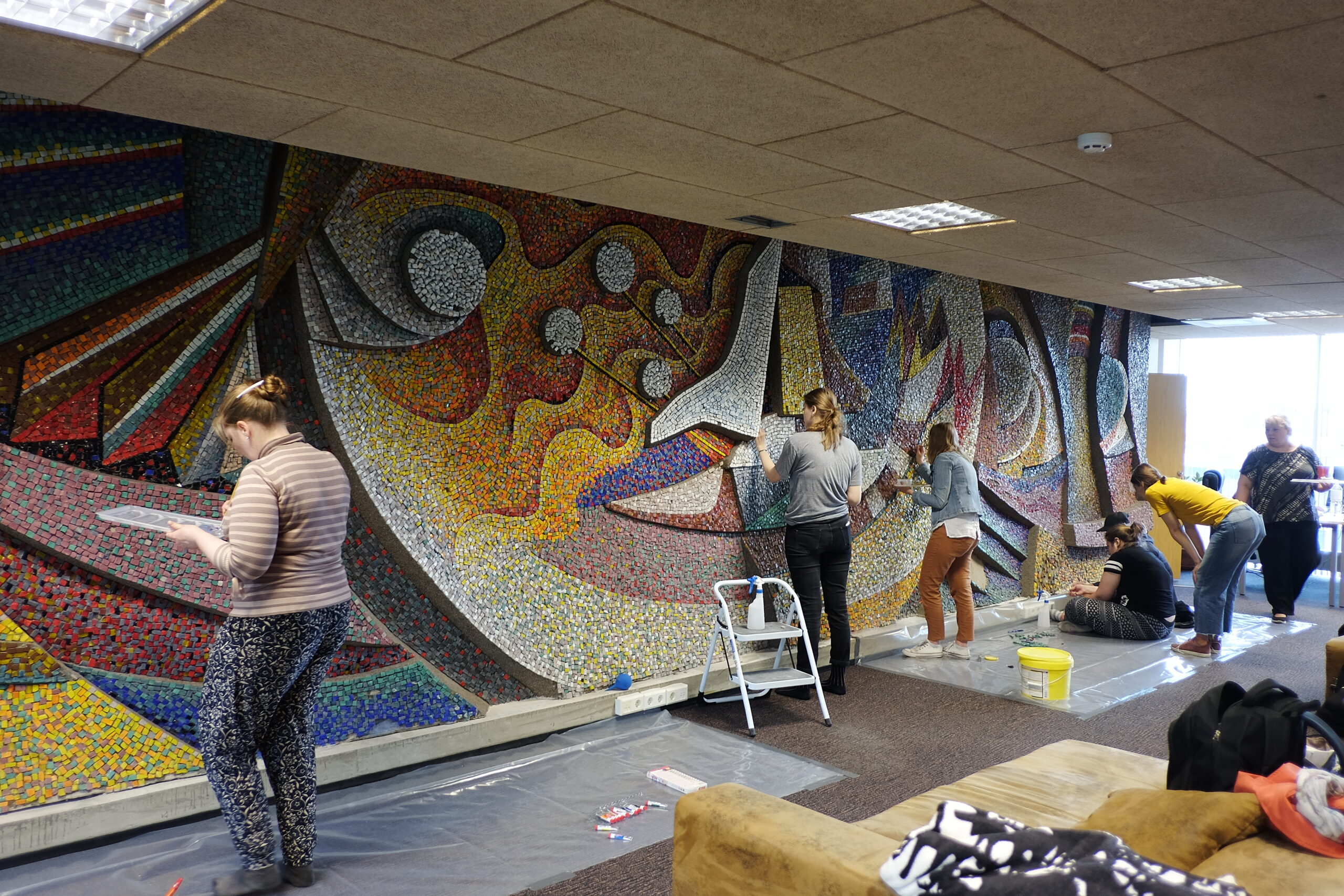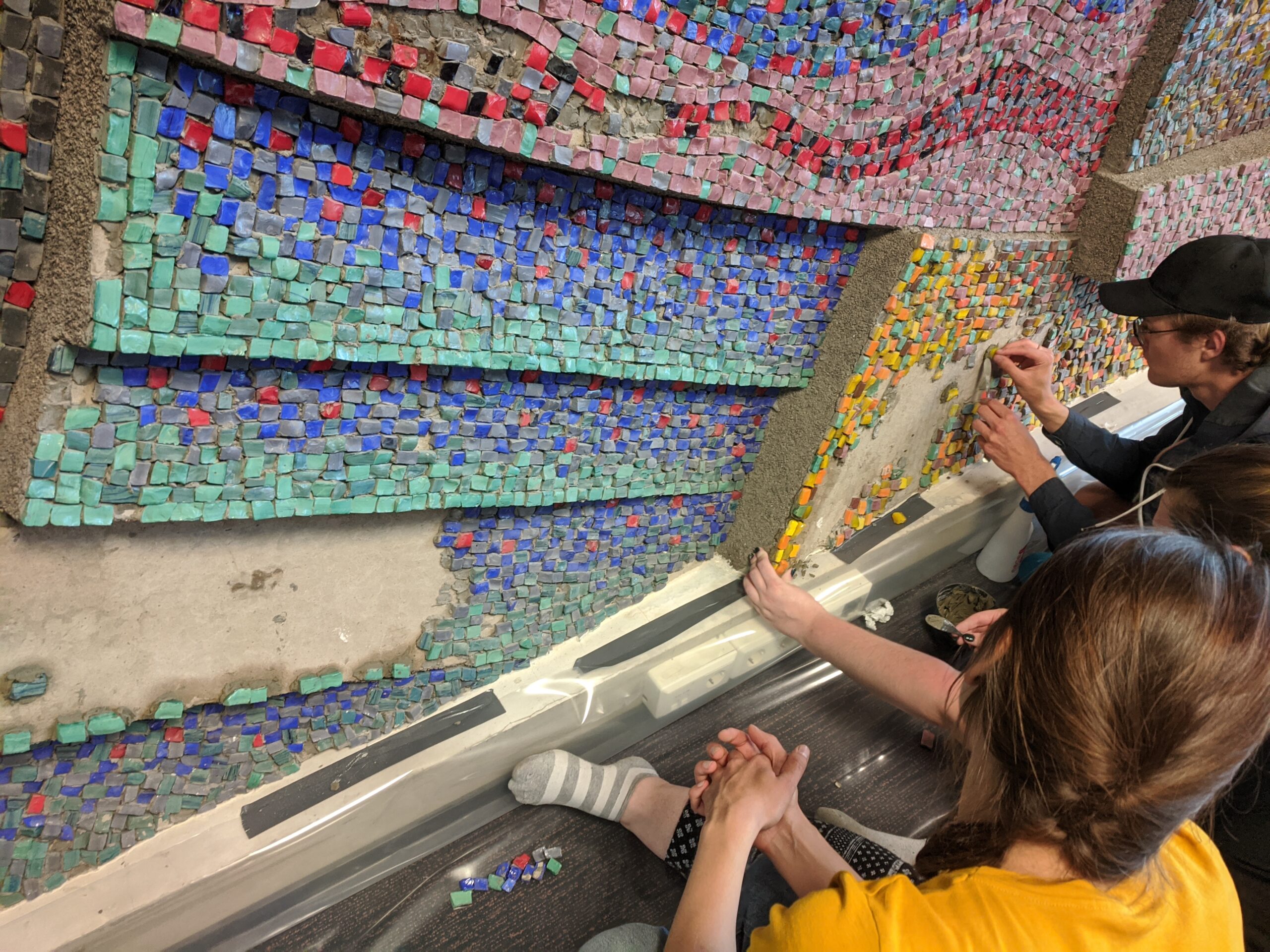Mosaic Pannel in the Tartu Testing-Repair Factory
Year of completion: 1974
Address: Tartu County, Tartu, Vasara 50
Author Vassili Tovtin
Coloured glass
36 square meters
Cultural monument no. 21 924
In 1974, a gigantic three-dimensional mosaic pannel was completed in the cafeteria of the Tartu Testing-Repair Factory, after the design of Ukrainian-origin artist Vassili Tovtin. The pannel consists of varicoloured glass tesserae pressed into mixture.
The Testing-Repair Factory was an aspiring and art-favouring enterprise in its time, and numerous creations of local artists were purchased for the decoration of working spaces, but it was decided in 1973 to commission the grandiose mosaic pannel for the decoration of the hall from Tovtin. The artist made a small plaster model of the pannel to explain his idea to the client, on the basis of which local craftsmen later created the mosaic. Several dozen kilos of varicoloured glass chunks melted at high temperatures were brought in and cut into suitable pieces on site with a Bakelite-tipped chisel. The pieces were fixed with mastic mixed from epoxy glue and cement, and the placing of pieces itself took three weeks. The pannel underwent changes during the placing of pieces as the colour tones assigned by the artist seemed too bright at times. The bold colours that perhaps on first glance do not seem to harmonise, create a very dynamic artwork that grows and transforms. Geometric forms have been created with the tesserae: semicircles, circles, triangles, squares, and waves. Both heavy colour and form contrasts, and soft transitions are present. Krista Sõster, who interviewed the factory’s previous workers in the context of her final project writes that the piece was not welcomed warmly, most likely due to its exotic colour scheme. Fair enough, similar dynamic forms and powerful use of colour can often be seen in the monumental art of Tovtin’s native land. The mosaic in the Testing-Repair Factory is as if a small piece of Soviet Ukrainian heritage, which definitely required time to be accustomed to in Estonia with its temperament.
Upon creation, the artwork resided in a great location room-wise – entering the room, it was on the room’s end-wall, surrounded by large windows on both sides, which illuminated the piece, making the colours shine and accentuating its three-dimensional qualities. Today, the distribution of the room has changed – what was initially the large hall has been divided into two office spaces, obstructing the view of the piece in its entirety. Additionally, the artwork does not reside in public space, which means it is not exhibited to a wider audience. Nevertheless, the piece is under national conservation as a cultural monument, and was restored in June of 2020 by Cultural Heritage and Conservation students of the Estonian Academy of Arts – a large number of the tesserae that had come off were put back, and lost pieces were replaced with toning.
Hilkka Hiiop, Varje Õunapuu









